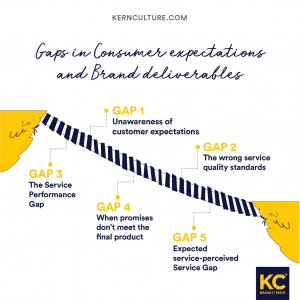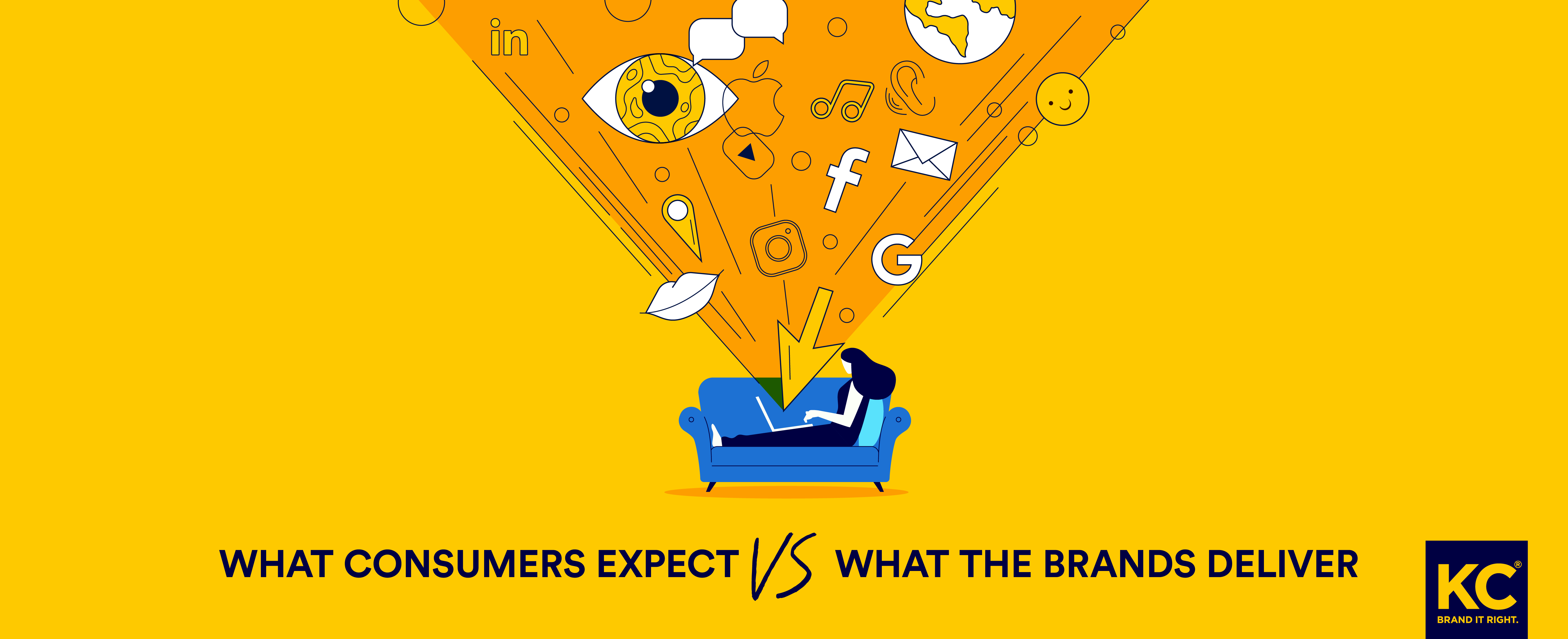Modern consumersare information-rich andhave become progressively demanding. They not only expect great quality products but anticipate excellent customer assistance. Even fully manufactured products like vehicles, cell phones, and PCs can’t gain a strategic competitive advantage through physical products alone. From a purchaser’s perspective, customer experience is viewed as a major part of any deal.
Brands not offering a good quality customer experience that should meet the expectations of consumers are difficult to sustain in a competitive market. This discrepancy in perceived customer success is one of the biggest challenges that businesses face today. When ‘what the customer receives’ doesn’t measure up to ‘what they expected to get from you’, it can prompt decreased sales and an awful standing. It may reflect on the quality of your product or highlight poor service provided by your team – either way, something will just-not-feel-right!
To identify the underlying problems associated with the GAP between consumer expectations and brand deliverables, product/brand managers across all industries can rely on the Service Quality GAP Model combined with great branding and digital marketing.
This model aims to,
- Listen to your customers.
- Examine your team’s knowledge based on industry analytics.
- Experience the customer journey firsthand.
- Implement changes in your business to narrow the gap.
- Understand that it’s an ongoing process.
With the GAP model developed by Parasuraman, Zeithalm, and Berry in 1985, The key is to identify gaps, close them, and improve customer service by promising and delivering what is expected. This model can be referred to as a framework for organizations attempting to improve quality service and marketing.
“For starters, the research found that 76% of customers now report that it’s easier than ever to take their business elsewhere – switching from brand to brand to find an experience that matches their expectations.” – Salesforce

The following are the five gaps:
GAP 1: Not Knowing what customers expect
The first GAP occurs because of the difference in interpretation between what customers expect and what managers perceive they expect.
Many reasons exist for managers not being aware of what customers expect:
- They may not interact directly with customers
- Be unwilling to ask about expectations or be unprepared to address- them.
- When people with the authority and responsibility for setting priorities do not fully understand customers’ service expectations, they may trigger a chain of bad decisions and sub-optimal resource allocations that result in perceptions of poor service quality.
Solution
When organizations are centered on approaching new customers at all times, they may neglect to comprehend the changing necessities for their present clients.
The final key factor associated with provider gap 1 is lack of service recuperation.
GAP 2: The wrong service quality standards
Provider gap 2 establishes in service organizations for multiple reasons.
- Those responsible for setting standards, typically management, sometimes believe that customer expectations are unrealistic.
- They may also believe that the degree of variability inherent in service defies standardization and setting ideal guidelines won’t accomplish the ideal objective
- When service standards are absent, they do not reflect customers’ expectations, quality of service as perceived by customers is likely to suffer.
Solution
- Is to design services without oversimplification, without distortion, inadequacy, subjectivity, or inclination.
- To do this, tools are needed to ensure that new or existing services are developed and improved in as careful a manner as possible.
- The servicescape, the physical setting where the service is delivered, must be appropriate.
Think of a restaurant, a hotel, a theme park, a health club, a hospital, or a school. The services cape-the physical facility is critical in these industries in terms of communicating about the service and making the entire experience pleasurable.
GAP 3: The Service Performance Gap
The discrepancy between service specifications and the actual service delivered initiates this gap.
This gap is caused when employees are unable and/or unwilling to perform the service at the desired level.
The reasons for the same include,
- Role Ambiguity,
- Role Conflict,
- Poor Employee-job fit,
- Poor Technology-job fit,
- Inappropriate supervisory control systems leading to inappropriate evaluation/compensation system and many such employees or team-related problems.
Solution
To close the GAP, setting clear goals for the employees is an essential part of managing a successful company. Your expectations for your team might shape their roles and daily workflows to help meet customer needs.
GAP 4: When promises do not match delivery
The difference between service delivery and the service provider’s external communications.
Promises made by media “advertising” sales force, and other communications may potentially raise customer expectations. The discrepancy between actual and promised service causes an adverse effect, on the customer gap.
Solution
Over promising and manipulative personal-selling, the difference in policies/terms and conditions, lack of understanding between marketing and operation departments, elevating expectations through exaggerated claims are some of the most common factors impacting the gap.
It is advisable to change the propensity of overpromising and communicating adequately with actual information to blur the gap.
GAP 5: Expected Service-perceived Service Gap
Gaps 1 through 4 contributes to the emergence of Gap 5, which is the difference between what the customer expected to receive from the service and what he/she receives.
Customers’ perceptions are influenced by many sources, which include word-of-mouth
communications, personal needs, past experiences, and communications from the service organization. The most important gap, if perceived service falls short of the customer’s expectations, he/she will be disappointed and dissatisfied.
Solution
Conversely, if the perceived service exceeds the customer’s expectations, he/she will be not only satisfied but delighted.
Promise less, provide more! Surprise your customers 🙂
“When customers share their story, they’re not just sharing pain points. They’re teaching you how to make your product, service, and business better.” – Kristin Smaby,
“Being Human is Good Business”
Delivering superior value to the customer is an ongoing concern of Brands.
Along with a sincere understanding of the customer requirements, a well-structured branding layout with responsive designs can give your service brand a distinguishable advantage in the marketplace.
The key is to identify these gaps, close them, and improve customer service by promising and delivering what is expected.
We at KERN CULTURE® help brands like yours, strike the goals.
To know more, log onto: kernculture.com /packages

